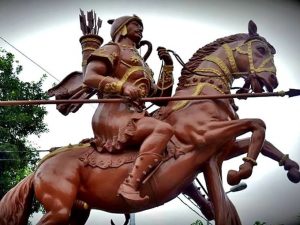Who Was Salar Masud And Raja Suhaldev?

Speaking at the inaugural event of the Kashi Vishwanath Dham Corridor in Varanasi, PM Modi referred to the battle between Salar Masud and Raja Suhaldev.
Salar Masud:
- Salar Masud was also known as Ghazi Mian. He acquired popularity as a warrior in the 12th century.
- He was the nephew of the 11th century Turkik invader, Mahmud of Ghazni.
- His tomb at Bahraich in Uttar Pradesh stands as a place of pilgrimage for a large number of Muslims as well as Hindus.
- He accompanied Mahmud in all his campaigns, including the celebrated expedition to Somnath in Kathiawar. It was Masud who supposedly persuaded his uncle to demolish the famous idol of Somnath – a deed repeatedly glorified as a great feat in Persian poetry.
- The most comprehensive source of information about Ghazi Mian is the Mirat-e-Masaud (Mirror of Masaud), a 17th century Persian hagiography written by Abdur Rahman Chisti, a Sufi saint of the Chisti order.
- Mughal emperor Akbar is known to have made a land grant in 1571 CE for the sake of maintaining Ghazi Miyan’s shrine.
Salar Masud and Raja Suhaldev:
- It is a mix of history and myth.
- As per the records, at Bahraich, in the course of a battle in 1034 CE Masud and a local king by the name Suhaldev came face to face.
- During the battle, Masud was wounded by an arrow and succumbed.
- Since he died fulfilling his duties as a warrior, he became a martyr and earned the honorary nickname ‘Ghazi Miyan’ or master warrior for faith.
Raja Suhaldev:
- Suhaldev is believed to have been the eldest son of the king of the Bhar community, from which emerged the Pasi community, a Dalit caste group of the region.
- Popular history of the region identifies him by several names including Suhaldev, Sakardev, Sahardev, and Suhildev.
- In contemporary print culture, however, he is referred to as Raja Suhaldev.




